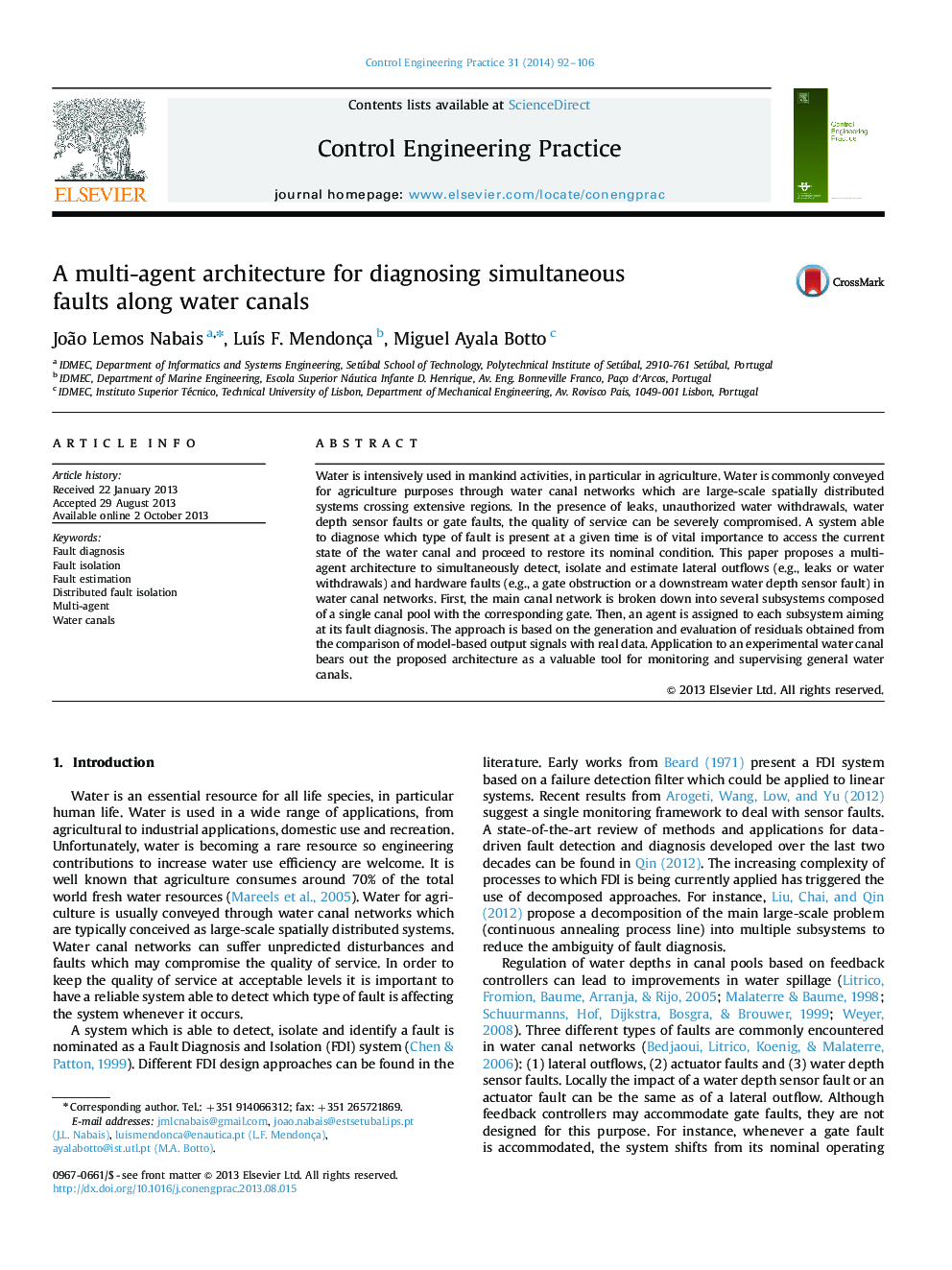| Article ID | Journal | Published Year | Pages | File Type |
|---|---|---|---|---|
| 699532 | Control Engineering Practice | 2014 | 15 Pages |
•Consider explicitly lateral outflows, gate faults and water depth sensor faults.•A multi-agent framework for fault diagnosis is proposed.•The main system is broken down into smaller subsystems to which an agent is assigned.•Hierarchical flow correction confines the impact of a gate obstruction to a single pool.•Three water depth sensors per pool enables the isolation of the downstream water depth sensor fault.
Water is intensively used in mankind activities, in particular in agriculture. Water is commonly conveyed for agriculture purposes through water canal networks which are large-scale spatially distributed systems crossing extensive regions. In the presence of leaks, unauthorized water withdrawals, water depth sensor faults or gate faults, the quality of service can be severely compromised. A system able to diagnose which type of fault is present at a given time is of vital importance to access the current state of the water canal and proceed to restore its nominal condition. This paper proposes a multi-agent architecture to simultaneously detect, isolate and estimate lateral outflows (e.g., leaks or water withdrawals) and hardware faults (e.g., a gate obstruction or a downstream water depth sensor fault) in water canal networks. First, the main canal network is broken down into several subsystems composed of a single canal pool with the corresponding gate. Then, an agent is assigned to each subsystem aiming at its fault diagnosis. The approach is based on the generation and evaluation of residuals obtained from the comparison of model-based output signals with real data. Application to an experimental water canal bears out the proposed architecture as a valuable tool for monitoring and supervising general water canals.
